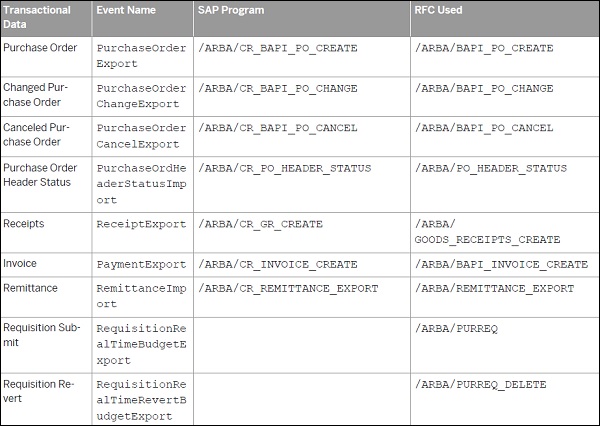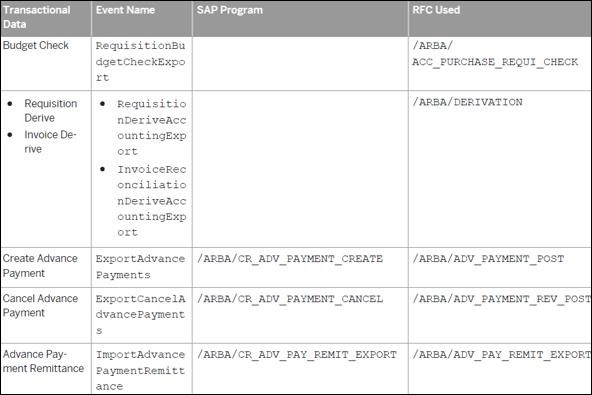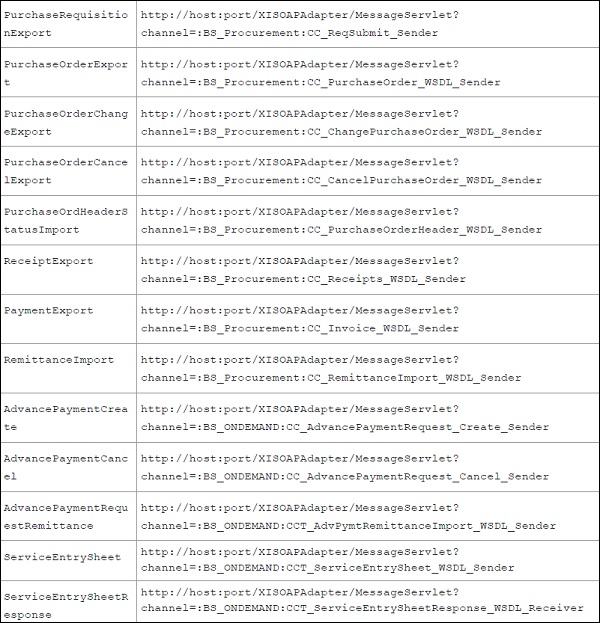
- SAP Ariba - Home
- SAP Ariba - Introduction
- SAP Ariba - Key Benefits
- SAP Ariba - Account Configuration
- User & Role Management
- Supplier Membership Fees
- SAP Ariba - Configuring SAP ERP
- Configuring Ariba Procurement Solution
- Buyers & Supplier Terms
- SAP Ariba - Integrating Master Data
- Integrating Transaction data
- SAP Ariba - SAP ERP Transports
- SAP Ariba - Downloading workbooks
- SAP Ariba - Installation
- SAP Ariba - Configuration
- SAP Ariba - Security Details
- SAP Ariba - Logging & Auditing
- Comparison With Other Tools
- SAP Ariba - Solution Areas
- SAP Ariba - Configurable Workflows
- SAP Ariba - Reporting Options
- Integration with S/4 HANA
- Best Practices For Integration
SAP Ariba - Integrating Transaction Data
Transactional data includes Purchase Order, invoice, receipts, payments and other business related information. Transactional data comes with a time stamp and a numerical value referring to one or more objects.
Following methods are commonly used for integrating transactional data between SAP ERP and Ariba Procurement solution −
Using file channel option
Using the web services channel
Using user interface option
Using mediated connectivity integration
Integration Using File Channel Option
For each file channel, you have scheduled integration events. An Ariba administrator can run these events manually. An executable program code is defined and scheduled to run. The code picks csv data file from Ariba Procurement solution and exports to SAP ERP database.
CSV files are generated using transaction events and these are picked by data transfer tool. To move data to ERP database, SAP transports should be imported. SAP transports are a combination of SAP Programs, RFCs, and supporting structures. The SAP executable programs are used to move the exported data into SAP ERP. The BAPI executable programs help in the moving of data into SAP ERP.
SAP programs usually contain the following parameters −
Logical File Name − This defines the logical path and the physical location of the CSV files.
Directory Separator − This is the physical separator for directories in SAP ERP.
Encoding in response files − Encoding technique that is used UTF-8 by default.
Variant − Variant Name
Partition − Partition Name
The following tables show different transactional data integration event components −


Using the Web Services Channel
The Web service method is based on the use of SOAP URLs configured by Ariba administrators. For all outbound events, a SOAP URL is generated automatically to be present in the generated WSDL according to the following logic −
<IncomingHttpServerURL> / <ContextRoot> / soap / <realm name> / <event_name>
In each WSDL, you have the following components −
Import − This component is used to associate a namespace with a document location.
Types − This component is used to define user created data types, which will be used in the document.
Message − This component is used to define all the parts of an individual message.
PortType − This is a container of supported operations by the web service. The operations in PortType are ordered. These operations indicate whether a message is inbound or outbound.
Binding − This element defines the operation to protocol mapping. (for example, http, https, MIME, etc.).
Service − This component is used to define the operation to address mapping and it shows the actual address the request should be forwarded.
There are various transactional data integration events spread across SAP ERP and Ariba Procurement solution.
The following table shows example URLs for each data integration event −

Using User Interface Option
In Ariba Procurement Solution, buyers can also use direct connectivity option to integrate data to SAP ERP system. This feature is supported in SAP ERP 6.0 and later versions. Using this option, ERP system sends a request to Ariba Procurement Solution with the header part containing parameter details for extraction of transactional data.
To use this option, transport request must be downloaded and imported into SAP ERP system.

When you use direct connection option using user interface, following limitations are applied −
No email notification while an error occurs during the transactional data integration.
Ariba administrator can see all error messages only in the runtime monitor of the SAP ERP and SAP Process integration.
When you check T-code SLGI, it does not store details of all error log in this transaction.
Using Mediated Connectivity Integration
This method uses SAP Process Integration layer with mediated connectivity option for integration of transactional data. Using SAP PI provides a secure way of integration and all certificates and key stores are created and stored in SAP Process Integration key store.
To use this option, transport request must be downloaded and imported into SAP ERP system. When you use direct connection option using user interface, following limitations are applied −
No email notification while an error occurs during the transactional data integration.
All error messages can be seen only in the runtime monitor of the SAP ERP and SAP Process integration by Ariba administrator.
When you check T-code SLGI, it does not store detail of all error log in this transaction.